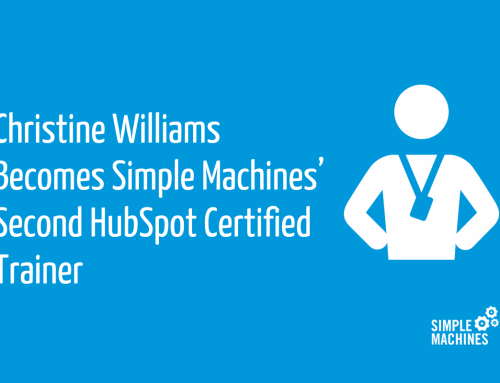In this short series, we’re organizing potential tactics by the amount of time required and the three principles of the inbound methodology they address: attract, engage and delight. Bookmark these posts, and the next time you have time for marketing, refer back to them for tactical ideas and inspiration.
Below is Part 3 in this series. Read Part 1: 15-Minute Tactics here and Part 2: 30-Minute Tactics here – or get them all in one place here.
Part 3: 60 Minutes
Attract
Use the following tactics to attract visitors, earn attention and remove friction as they try to learn about your company.
- Pitch yourself to a media outlet to build awareness
- Work on a blog, article or white paper
- Make a short DIY video
- Set up your Ad Account in your Facebook Business Manager
- Create an Ad Campaign on LinkedIn
- Manage your paid ad campaign (traditional PPC such as Google Ads, Facebook or LinkedIn)
- Develop a new digital ad (display or search PPC)
- Conduct keyword research to ensure your SEO strategy is on track; note any new keywords you’re not optimizing for and/or changes that may affect your search visibility
- Monitor social media for mentions of your brand, competitors and product/service offerings; record opportunities to engage in the conversation or develop content based on the findings
- Meet with a member of your sales team – or write down questions for them to respond to later – to discuss frequently asked questions, new inquiries and if their sales cycle has changed so that you can use this information to inform blog posts, white papers and more
- Create a social media content calendar of evergreen posts so that you have fodder for the month as needed
- Brush up on a marketing-related certification such as Google Ads, Facebook BluePrint, or a HubSpot certification to help ensure you’re using the channels effectively
Engage
Use the following tactics to personalize visitor experiences, foster relationships with potential buyers and nurture leads into loyal customers.
- Audit your lead segmentation strategy
- Optimize one website/landing page for conversions
- Manage your social media inbox
- Develop a piece of consideration stage content relevant to your leads, such as a case study or comparison guide
- Compose an email template that answers FAQs received from leads
- Create a new workflow that includes a helpful resource for existing and future leads
- Audit your blog and add/change the calls-to-action (CTAs) to posts that receive significant traffic but don’t convert traffic into leads at a strong rate
- Design a new version of your CTA and designate relevant content on which to test
- Create/revamp your newsletter sign-up page and set a goal for subscription rate
- If you don’t have a chatbot yet, create a strategy to begin testing one on your site
- Create a visual conversion pathway for each of your buyer personas and determine which paths can be simplified or added to for improvement
- Set up personalized meeting links for your sales team
Delight
Use the following tactics to make your current customers so happy they’ll want to go out and sing the praises of your business.
- Treat a customer to coffee or lunch
- Plan a customer appreciation event or promotion
- Create a video answering the top 5 most frequently asked questions from customers
- Review your CRM for customers that recently received less-than-stellar service; write personal notes to them thanking them for their patience and apologizing, if warranted
- Create a customer feedback survey
- Research and consider whether a new CMS that allows for smart personalized content might provide a better experience for your customers
- Plan and outline a case study that makes a valued customer look great
- Create a customer appreciation video that features members of your team thanking customers for their business
- Highlight praise from your customers’ social media pages on your website
- Assemble and package personalized gifts for an upcoming holiday
While 15- and 30-minute windows are nice for knocking out quicker tasks, 60-minute windows are much more conducive to projects that require deeper work and uninterrupted concentration, like content creation, strategy and analysis. So, though it can be tempting to use a 60-minute window to cross off a bunch of easy to-do’s, take advantage of these blocks when you can and put them toward your bigger marketing projects.
Want a print-friendly reference guide with all of our 15-, 30- and 60-minute tactics in one place?












